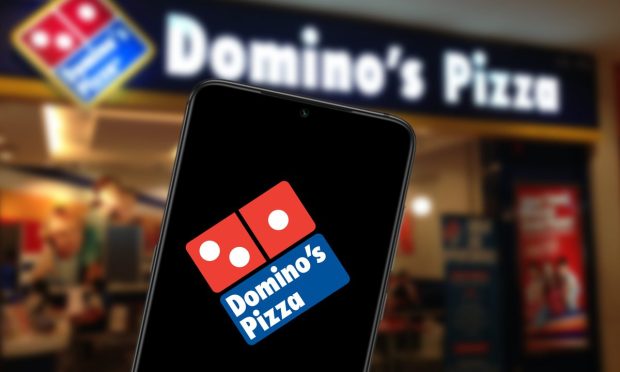Amid Delivery Pressure, Domino’s Drives 20% Increase in Pickup

Domino’s Pizza’s efforts to drive pickup sales are proving successful. The quick-service restaurant (QSR) giant, which has more than 19,500 stores around the world, shared Thursday (Oct. 13) on a call with analysts regarding its third-quarter 2022 financial results that carryout same-store sales grew 19.6% year over year in the quarter. Plus, these sales were up 55% relative to Q3 2019.
With restaurants’ delivery businesses hit by labor challenges and by inflation-concerned consumers cutting back on unnecessary spending, the brand has been pushing for years to boost pickup sales.
Plus, the company has improved its delivery business in recent quarters, but pressures remain.
“Staffing remains a constraint, but my confidence in our ability to solve many of our delivery labor challenges ourselves has grown over the past few quarters,” CEO Russell Weiner told analysts. “While we still have work to do to get back to our highest standards for delivery service, I am encouraged by the progress we’ve made so far.”
CFO Sandeep Reddy noted that delivery sales were down 7.5% year over year, attributing this downtrend to a shift toward on-premises dining “as consumer behavior starts to revert to pre-pandemic habits.” This marks an improvement over the previous quarter, wherein delivery sales were down 11.7% year over year. The quarter before that, Weiner noted that the company was unable to meet delivery demand, with labor challenges limiting capacity.
Related: Domino’s Plans to Add More Stores to Ease Delivery Woes
Certainly, there is significant consumer demand for pickup options. Research from the June edition of PYMNTS’ Digital Divide study “The Digital Divide: Technology, Customer Service And Innovation In The Restaurant Industry,” which draws from a survey of nearly 2,400 U.S. adults who regularly purchase food from restaurants, finds that 38% of diners’ favorite way to order is for pickup, while only 7% prefer delivery.
Get the report: The Digital Divide: Technology, Customer Service And Innovation In The Restaurant Industry
This demand is especially useful for the brand now; Weiner noted that inflation is impacting delivery more than pickup.
“Our research shows that a relatively higher delivery costs might lead some customers to prepare meals at home,” Weiner said. “This could be exacerbated as consumer spending becomes more constrained around the holiday.”
Indeed, research from PYMNTS’ study “Consumer Inflation Sentiment: Inflation Slowly Ebbs, but Consumer Outlook Remains Gloomy,” which drew from an August survey of 2,169 consumers, found that 78% expect to eat at home more often to save money in response to inflation. Plus, 38% reported that they plan to go to restaurants with lower prices.
One advantage working in the pizza giant’s favor is the strength of its mobile platform relative to competitors. Research from PYMNTS’ Provider Ranking of Mobile Order-Ahead Apps, uses leverages a proprietary combination of publicly available information and app usage data to which PYMNTS has access to rank restaurants’ ordering apps, has Domino’s Pizza tied for first place with Taco Bell and Starbucks.
You may also like: Sonic Plummets, Wingstop Rises in This Month’s Mobile Order-Ahead Ranking
